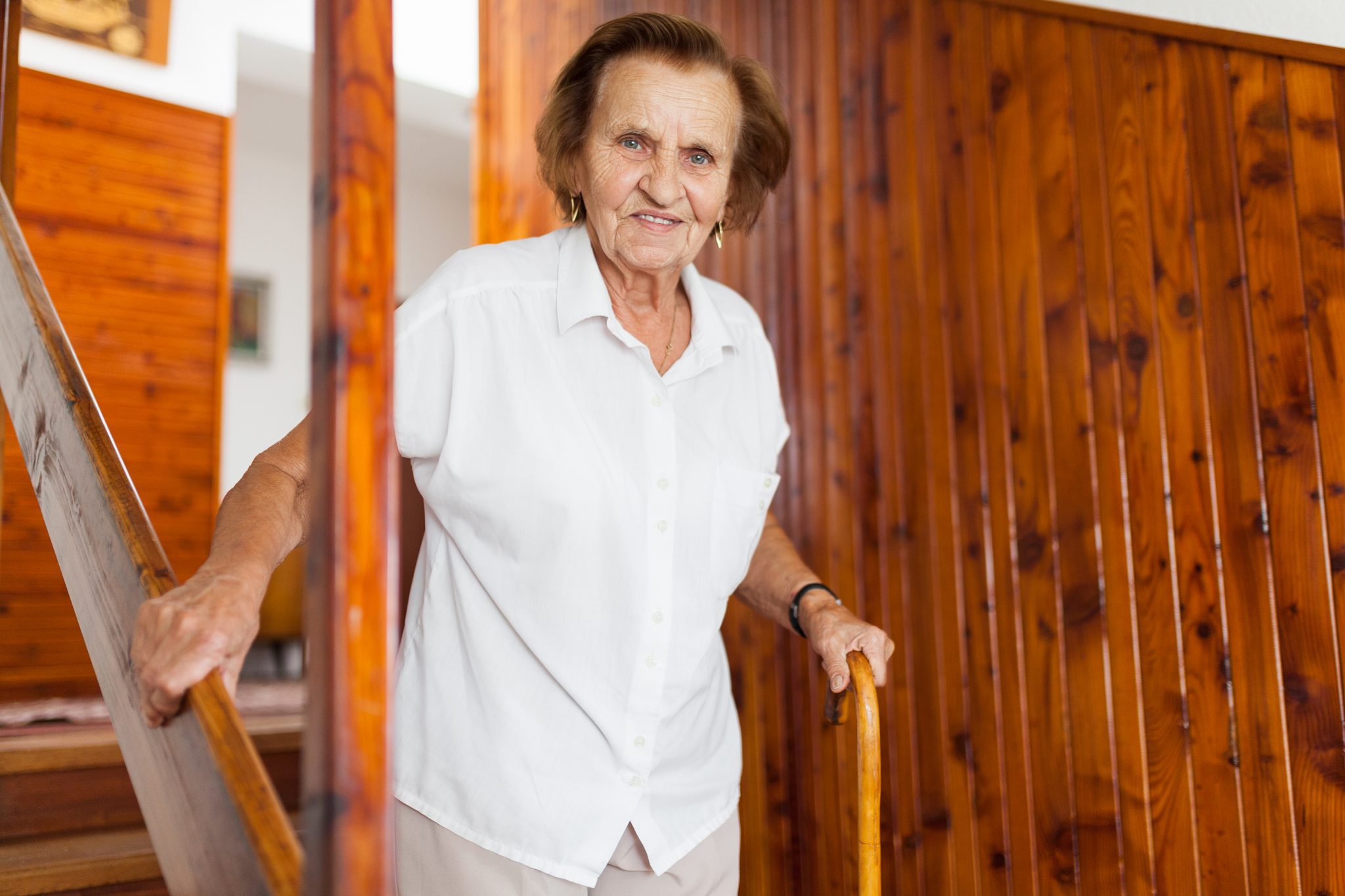Home & Family

Falls are one of the major threats to the safety and independence of older adults.
Introduction

Figure 1. Older adult woman on the stairs. iStock Photo credit: AND-ONE
Falls are one of the most significant threats to the safety and independence of older adults. Between 2009 and 2018, there was a 30 percent increase in the death rate of adults 65 and older due to falls in the United States. According to the Centers for Disease Control and Prevention, adults 85 and older make up the fastest-growing population among fall death rates. Falls are a significant health issue that impacts the lives of older adults physically, mentally, socially, and economically.
Many older adults are becoming less active due to their fear of falling. Such fear can lead to social isolation and depression. Increased awareness of the risks of falls and how to prevent them can help older adults maintain their independence and improve their quality of life. While falling can happen to anyone, older adults must be aware of the various risk factors that increase their chances of falling.
How to Reduce Your Risk of Falling
Biological Changes in the Body
Have you considered these factors? Answer YES or NO
- Illnesses (Bowel/Bladder Incontinence, Stroke, Parkinson, etc.)
- Fear of falling
- Poor eyesight
- Problem with feet
- Disease (physical abilities impaired – stroke, Parkinson, bladder, etc.)
- Poor balance
- Weakened muscles
Reduce Indoor Environmental Risks
Have you considered these factors? Answer YES or NO
- Remove trip hazards such as clutter, spills, electrical cords, pets, etc. from floors and stairs.
- Secure corner of rugs to prevent ends from rolling.
- Use area and throw rugs with non-slip bottoms.
- Use contrasting tips of opposing colors on stairs or steps.
- Use bright lighting throughout the house.
- Avoid waxing or polishing floors.
- Use night lights.
- Mount rail on side of bed (bed rails).
- Mount grab bars on wall in or near shower, tub, and toilet.
- Mount rails on both sides of stairs.
- Use a raised toilet seat (with or without arms/bars).
- Use a non-skid bathmat beside tub/shower to absorb water.
- Place a non-slip rubber mat or strips on bottom of tub.
- Install a shower chair.
- Have a handheld shower head available.
- Mount liquid soap dispenser near tub or shower.
- Avoid taking a bath in a deep bathtub when weak or frail.
- Participate in programs to improve poor balance.
- Actively participate in programs and activities that strengthen weak muscles.
Decisions/Choices that Can Reduce Risk Factors
Have you considered these factors? Answer YES or NO
- Wear properly fitting clothes and shoes at all times that do not limit your movement.
- Rise slowly from a chair, sofa, or bed.
- Always keep a portable phone with you.
- Avoid using several prescribed or over-the-counter medications that could have negative side effects.
- Accept that your body is changing and that your movement may be limited as you grow older.
References
Centers for Disease Control and Prevention. (2021). WISQARS – Web-based injury statistics query and reporting system. Retrieved from https://www.cdc.gov/injury/wisqars/
Centers for Disease Control and Prevention. (2017). Important facts about falls. Retrieved from https://www.cdc.gov/homeandrecreationalsafety/falls/adultfalls.html.
Dorothy Brandon, PhD, CPFFE, Consumer Science & Personal Financial Management Specialist; and Ciji Griffin, Pamela Irby, Darlene Minniefield, and Bre Steele, Urban Regional Extension Agents, Alabama A&M University
Revised August 2022, Worksheet: Decreasing the Risk of Falling, UNP-2170

